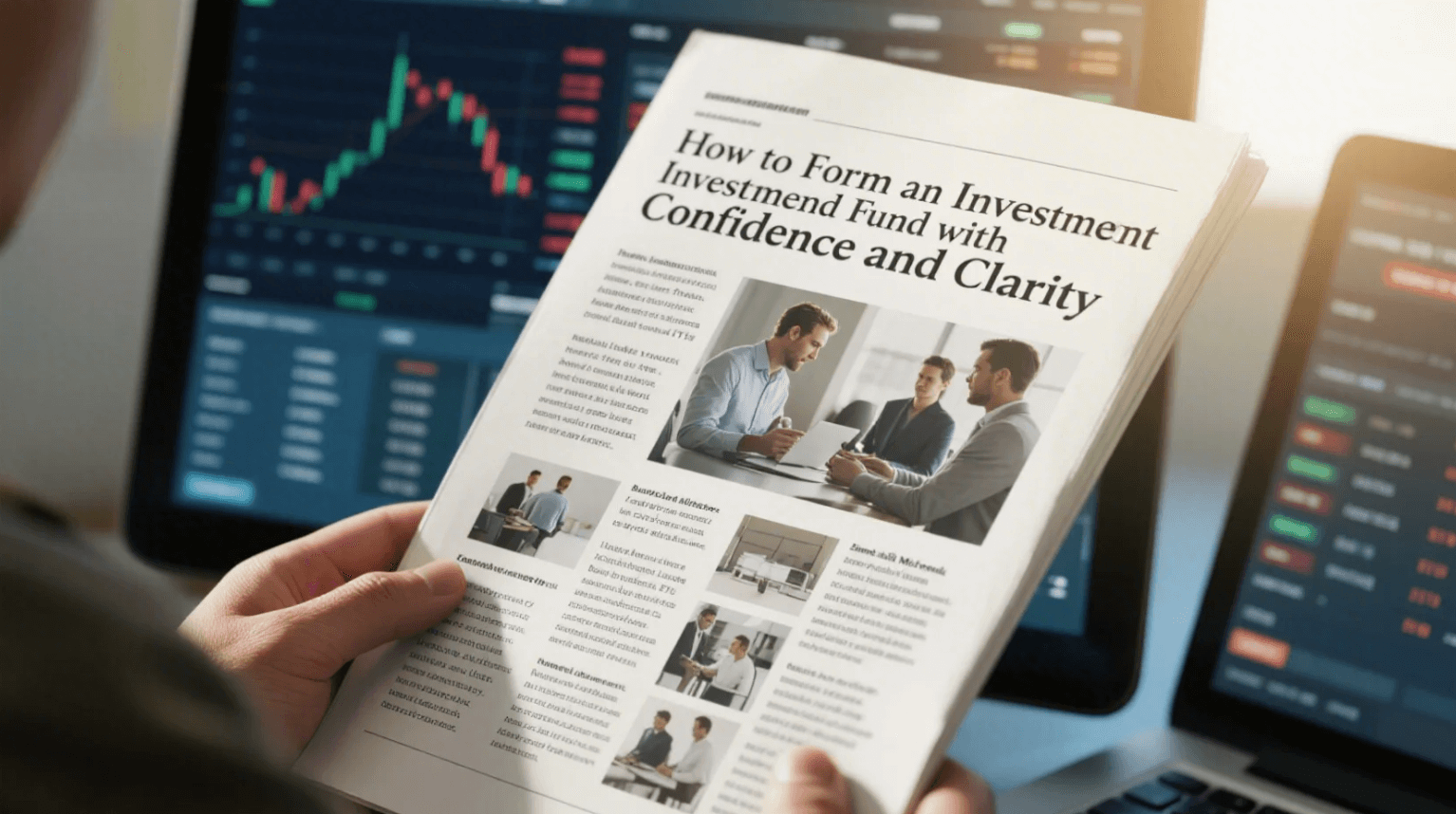
How to Form an Investment Fund with Confidence and Clarity
Understand Fund Basics
Forming an investment fund can involve purchasing a range of assets, from stocks to bonds. Some investors choose stocks, which represent ownership in publicly traded companies like Apple or Microsoft, with the goal of selling later at a higher price (SmartAsset). Others lean toward bonds, lending money to governments or corporations at a fixed interest rate, often accepting lower returns in exchange for lower risk. Mutual funds and Exchange-Traded Funds (ETFs) also play key roles by pooling diverse holdings. These options let investors spread risk across several assets rather than relying on a single stock or bond.
Stocks, Bonds, and Beyond
When deciding which assets to include in a new fund:
- Stocks can bring greater returns but fluctuate quickly.
- Bonds generally offer stable income with lowered risk.
- CDs (Certificates of Deposit) provide predictable, albeit modest, interest rates and are FDIC-insured up to $250,000, offering security for cautious investors (SmartAsset).
Mutual Funds vs. ETFs
Mutual funds typically have a fund manager who researches investments and actively decides how to allocate the pooled capital (Investopedia). ETFs, on the other hand, trade throughout the day on stock markets, often tracking an index. They can be more flexible for experienced investors who watch price changes in real time.
Low-Risk CDs
Some high-net-worth individuals favor CDs to preserve capital. Although the returns may stay modest, the principal is protected up to the FDIC limit. This makes CDs especially appealing to those who want a stable foundation when forming a new investment fund.
Address Legal Requirements

Legal structures and compliance obligations matter greatly. The Securities and Exchange Commission (SEC) in the United States enforces strict rules for certain fund types, with private funds enjoying fewer regulations if they qualify for exemptions (SEC.gov).
Compliance and Structure
Structures like limited partnerships, limited liability companies, or corporations each come with specific legal implications. Private funds commonly use a limited partnership agreement to govern capital commitments, profit distribution, and withdrawal rules. Some funds must register under the Investment Company Act, while others seek exemptions via Regulation D if they only accept accredited investors.
Key Fund Documents
Formal documentation might involve:
- Limited partnership agreements that define each partner’s role.
- Operating agreements detailing how leadership teams make decisions.
- Prospectuses (especially for mutual funds) that explain fees, objectives, and risk factors (Investor.gov).
Build a Strong Plan

A comprehensive plan helps attract investors and ensures everyone shares a clear vision. Many potential backers want to see a transparent business roadmap, realistic cost projections, and data proving consumer or market interest (G-Squared Partners).
Prove Consumer Interest
Consumer interest acts as a powerful signal that a market exists. Investors often expect evidence of actual demand, such as pre-orders, a waiting list, or traction in test markets. Companies that demonstrate genuine interest can reinforce that their fund has a purposeful direction.
Leadership and Team
A well-rounded leadership team is crucial. Investors look for founders with backgrounds in finance, law, or management, and they also consider whether the team has navigated similar ventures. Having an experienced compliance officer, fund manager, or financial advisor strengthens trust in the fund’s ability to operate responsibly.
Attract Potential Investors

To raise capital, many founders pitch to high-net-worth individuals or specialized funding groups. Potential investors often rely on references, track records, and thorough due diligence before committing to a fund (British Business Bank). Some also use platforms that connect proven entrepreneurs with funders seeking tailored opportunities.
- Pursuing different investor pools might require varied strategies, from personal networking events to online portals.
- Having realistic startup costs and a clear plan for how proceeds will be used reassures backers that their money is well-managed.
Consider linking to broader knowledge about seeking investors for business if more detailed insights on raising external capital are needed.
Select and Monitor Managers

Manager selection can make or break an investment fund’s performance. Investors who prioritize active management typically look for teams that consistently outperform a benchmark. Others might prefer passive index funds with minimal fees. Fiducient Advisors, for instance, recommends active managers in asset classes where active management has historically beaten the benchmark. In asset classes with lower outperformance potential, they suggest low-cost index alternatives (Fiducient Advisors).
Keep Fees Under Control

Even small fee differences can erode potential gains over time (Investopedia). Expense ratios, advisory fees, transaction fees, and sales loads all factor into a fund’s cost structure. By choosing no-load mutual funds, low-expense ETFs, or negotiating management fees with advisors, it is possible to retain more of the returns. Some also adopt tax-advantaged accounts, like Roth IRAs or 401(k)s, to keep distributions sheltered from immediate tax obligations and further offset the impact of expenses.
- Reducing layers of administrative overhead can free up cash for reinvestment.
- Providing transparent accounting of fees helps build and maintain investor confidence.
Summary and Key FAQs
Forming an investment fund requires a balance of strategic vision, legal insight, effective fundraising, and robust planning. It also demands ongoing diligence to adapt to market changes and ensure that management decisions align with investor objectives.
When exploring how to form an investment fund, five frequently asked questions that often arise are: how much capital is needed up front, which regulatory steps are necessary to stay compliant, are there best practices for attracting the right investors, how does one manage ongoing expenses, and how long does it typically take to launch the fund?
Investors who follow a structured plan, assemble a capable team, and stay attentive to fees and compliance concerns tend to lay a more confident foundation. For those seeking an introduction to fundamental principles, linking to understanding investments can offer further clarity.
Showcase your recognition by adding our award badge to your website! Simply copy the code below and embed it on your site to highlight your achievement.

Recent Posts
Investment Firms in Los Angeles to Consider
Los Angeles is home to a diverse and dynamic financial...
Investment Firms in New York to Consider
Choosing the right investment firm is crucial for achieving your...





